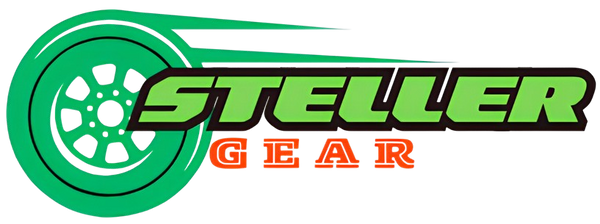
Top 5 DIY Automotive Projects to Use Your High-Quality Tools
Share
Top 5 DIY Automotive Projects to Use Your High-Quality Tools
Introduction
DIY automotive projects not only save you money but also enhance your skills and understanding of your vehicle. Whether you are a seasoned mechanic or a beginner, using high-quality automotive tools for DIY is essential. These tools can make your projects easier and more enjoyable, ensuring professional-grade results. In this blog post, we will explore five engaging DIY automotive projects that you can tackle using your high-quality tools.
Understanding High-Quality Automotive Tools for DIY
High-quality automotive tools are those that offer durability, precision, and reliability. Using such tools can significantly impact the quality of your work. Unlike cheaper alternatives, high-quality tools can withstand wear and tear, allowing for a safer and more effective DIY experience.
Investing in top-tier tools can reduce the time and effort needed to complete repairs. Quality tools can help you work more efficiently and avoid unnecessary frustration, translating to a smoother experience on every project.
Essential Tools for Car Maintenance
Basic Tool Kit
Having a well-equipped basic tool kit is the foundation of any successful DIY project. Here are some essential tools for car maintenance:
- Socket Set: A socket set will help you tackle various nuts and bolts.
- Wrenches: These are crucial for loosening and tightening fasteners.
- Screwdrivers: A selection of screwdrivers can assist with various interior and exterior tasks.
- Pliers: Pliers are handy for gripping, twisting, and cutting.
- Jack and Jack Stands: Safety is paramount, so invest in good jacks for lifting your car safely.
When you have the right tools at your disposal, car maintenance becomes significantly easier.
Advanced Tools
As you grow more comfortable with DIY projects, you may find the need for advanced tools. These can include:
- Torque Wrench: To ensure bolts are tightened to the manufacturer’s specifications.
- Scan Tool: For diagnosing electronic issues.
- Brake Bleeder Kit: For replacing brake fluid without hassle.
Upgrading your DIY toolkit with these advanced tools can help you manage more complex repairs and enhance your overall automotive skills.
Top 5 Popular DIY Automotive Projects
Oil Change
One of the simplest DIY projects is an oil change. Here’s how to do it:
- Gather Tools: You will need a socket set, oil filter wrench, new oil, and an oil filter.
- Lift Your Vehicle: Use a jack and jack stands to elevate your car safely.
- Drain the Oil: Remove the oil drain plug and allow the old oil to flow out.
- Replace the Oil Filter: Use your oil filter wrench to remove and replace the filter.
- Add New Oil: Reinstall the drain plug and pour in the fresh oil.
Using high-quality automotive tools during this process can help prevent spills and errors.
Brake Pad Replacement
Brake pad replacement is another popular DIY project. Here’s a brief overview:
- Gather Tools: You will require a jack, lug wrench, and brake tool set.
- Lift the Vehicle: Safely raise your vehicle.
- Remove the Wheel: Take the lug nuts off to access the brakes.
- Swap the Brake Pads: Replace the old pads with new ones.
- Reassemble the Wheel: Put everything back together and lower your car.
Safety precautions are critical here. Always wear gloves and goggles, as working on brakes can be messy.
Battery Replacement
Replacing a car battery is straightforward:
- Prepare Your Tools: You’ll need a socket set and sometimes a battery terminal cleaner.
- Disconnect the Old Battery: Always disconnect the negative terminal first to avoid sparks.
- Replace the Battery: Remove the old battery and place the new one in the compartment.
- Reconnect: Attach the positive terminal first, followed by the negative.
A fresh battery can significantly improve your car’s energy efficiency.
Tire Rotation
Tire rotation is crucial for ensuring even tire wear. Here’s how to do it:
- Gather Tools: A jack, jack stands, and a lug wrench are necessary.
- Lift Your Vehicle: Raise one side of your vehicle at a time.
- Remove the Tires: Unscrew the lug nuts and swap the tires in a recommended pattern.
- Reattach the Tires: Put the lug nuts back on and lower your car.
Using the right tools can ease this process and protect your wheels.
Interior Cleaning and Detailing
Keeping your car’s interior clean is equally important:
- Get Your Supplies: High-quality vacuum, microfiber cloths, and interior cleaner.
- Vacuum Interiors: Thoroughly vacuum all areas, including under the seats.
- Use Cleaners: Apply interior cleaners to surfaces and wipe them down.
A clean interior can enhance your driving experience, making it more enjoyable.
DIY Car Repair Tips for Success
When engaging in DIY automotive projects, keep in mind a few helpful tips:
- Research: Familiarize yourself with the task before starting; there are plenty of resource guides and videos.
- Stay Organized: Keep your workspace tidy to avoid misplacing tools.
- Don’t Rush: Take your time and follow each step meticulously.
Common mistakes include skipping safety precautions or not having the right tools, so always double-check your supplies.
Safety Precautions for Automotive DIY
Safety should always be your top priority. Here are essential precautions:
- Wear the Right Gear: Safety glasses, gloves, and masks can protect you from injuries.
- Work in a Well-Ventilated Area: This helps to avoid inhaling exhaust fumes.
- Follow Instructions: Always adhere to manufacturer guidelines.
Taking these steps can prevent accidents and ensure you stay safe during your DIY projects.
Conclusion
Using high-quality automotive tools for DIY projects can transform your car maintenance experience. You can achieve professional results while gaining valuable skills. With these tips and projects, you're ready to start your DIY journey. Don’t hesitate to explore StellerGear’s collection of automotive tools and products. Happy DIYing!
